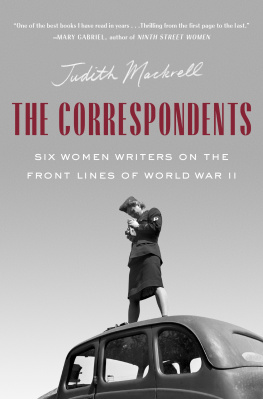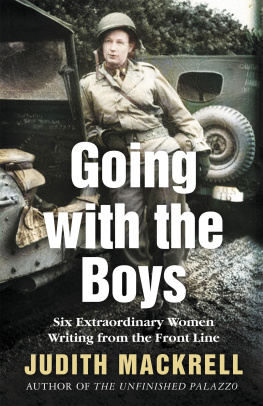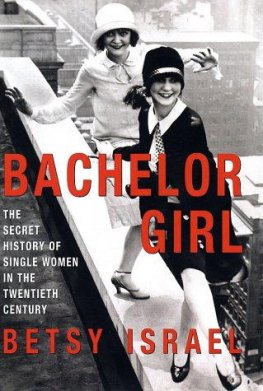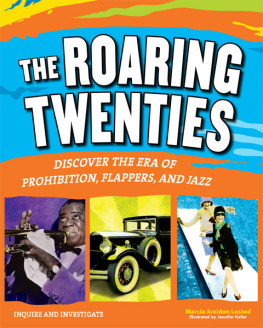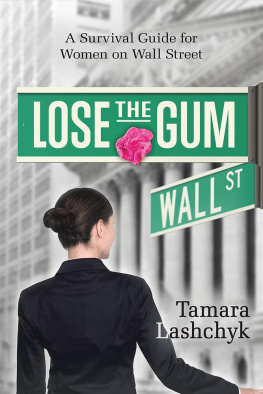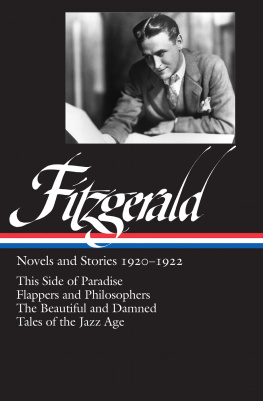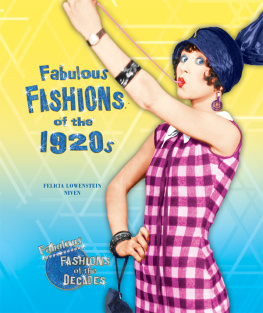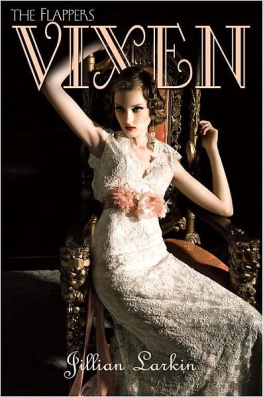
The author and publisher have provided this e-book to you for your personal use only. You may not make this e-book publicly available in any way. Copyright infringement is against the law. If you believe the copy of this e-book you are reading infringes on the authors copyright, please notify the publisher at: us.macmillanusa.com/piracy.
For Fred and Oscar
CONTENTS
ILLUSTRATIONS
AUTHORS NOTE AND ACKNOWLEDGEMENTS
The 1920s was a decade of exhilarating change for women and this book tells the story of six in particular, each of whom profited from that decade in remarkable ways. Diana Cooper, Nancy Cunard, Tamara de Lempicka, Tallulah Bankhead, Zelda Fitzgerald and Josephine Baker were famous in their own right; for each of them the Twenties was a moment of exceptional opportunity. Yet viewed as a group these women were also very representative of their times: they chased similar ambitions, fought similar battles, even shared the quirks of their generations collective personality.
The world they inhabited was also comparatively small. Despite living and working in a variety of cities, these women shared lovers and friendships as well as personal concerns. They were written about by the same novelists and journalists, photographed for the same publications. But biography is essentially about the colour and detail of individual lives and in writing this book Ive been fortunate to profit from the groundwork of many other fine biographers. To their research and knowledge I owe a profound debt.
In the matter of language, the 1920s was a world away from our own politically conscious era. Young women were girls, blacks were often niggers, female actors were actresses, and even though this usage can grate on modern ears, Ive opted to retain a flavour of it, for the sake of period accuracy. For the same reason Ive presented quotations from letters and diaries, etc., in their original form, without tidying up oddities of spelling, grammar or idiom.
In the matter of money, which was of paramount concern to most of these women, Ive tried to give a general sense of values and exchange rates, but not to track year-by-year changes. The franc in particular vacillated wildly against the other major currencies after the collapse of the Gold Standard in 1914, and its weakness against the dollar, coupled with bullish rises in the American stock market, was a major factor in Paris becoming so attractive to foreign artists and writers, and playing so central a role in this story.
The following offers the roughest of guides to the value of the money in the wage packets or bank accounts of these six women, using the Retail Price Index (RPI) to pin these values to the present day:
In 1920, 1 was worth approximately $3.50, or 50 francs, which equates to 32.85 in todays values.
In 1925, 1 was worth approximately $5.00, or 100 francs, and equates to 46.65 today.
In 1930, 1 was worth approximately $3.50, or 95 francs, and equates to 51.75 today.
I would like to thank the following for their generous permission to quote from published and unpublished works: the Felicity Bryan Literacy Agency and John Julius Norwich for the Estates of Lady Diana Cooper and Duff Cooper for extracts from A Durable Fire: the Letters of Duff and Diana Cooper, edited by Artemis Cooper, compilation Artemis Cooper 1983; The Rainbow Comes and Goes, The Autobiography of Lady Diana Cooper The Estate of Lady Diana Cooper 1958; The Duff Cooper Diaries 19151951, edited and introducted by John Julius Norwich 2005; Cooper Square Press for extracts from Josephine Baker: The Hungry Heart by Jean-Claude Baker and Chris Chase; Aurum Press for extacts from Tallulah! The Life and Times of a Leading Lady by Joel Lobenthal; Random House for extracts from Save Me The Waltz by Zelda Fitzgerald; Gollancz for extracts from Tallulah: My Autobiography by Tallulah Bankhead; Scribner & Sons for extracts from the works of F. Scott Fitzgerald and from the letters of Scott and Zelda Fitzgerald; the Harry Ransom Center for extracts from the personal papers of Nancy Cunard; the Estate of T.S. Elliot and Faber and Faber Ltd for extracts from The Waste Land; the Estate of Tamara de Lempicka for extracts from Passion by Design: the Art and Times of Tamara de Lempicka by Kizette de Lempicka-Foxall and Charles Phillips 2013 Tamara Art Heritage, licensed by Museum Masters NYC.
Aside from the biographers and historians whove gone before me, all of whom are listed in the bibliography, I want to thank those whove given exceptional, generous help and advice in the writing and publication of this book.
Gillian Darley and Michael Horowitz, Kate and Paul Bogan offered fantastic hospitality; many friends were patient sounding boards for my ideas, and Debra Craine in particular went beyond the call of duty in reading and commenting on the book in its manuscript stages.
Enormous thanks to my brilliant editor Georgina Morley scrupulous, funny and challenging; also to the rest of the editorial team at Macmillan including my very patient production manager, Tania Wilde, and meticulous copy-editor Shauna Bartlett. Thanks again to the staunch support of my agent Clare Alexander.
And finally love, as always, to my family.
Judith Mackrell, January 2013
INTRODUCTION
On 2 October 1925 a young American dancer from the black ghetto of St Louis stood on the stage of the Thtre des Champs-Elyses in Paris. Her limbs were trembling from exhaustion as well as from the clamour erupting from the crowd below. People in the audience were screaming, shouting, drumming their feet; yet what seemed to her a terrifyingly hostile noise was in fact the sound of Paris acknowledging a star. Just three months earlier Josephine Baker had been a skinny chorus girl living on a modest wage and a hopeful dream. Now, repackaged as a burnished, exotic beauty, she was about to be hailed as a cultural phenomenon.
The Paris correspondent of the New Yorker reported that within half an hour of Josephines debut the citys bars and cafs were talking only of the magnificent eroticism of her dancing. Maurice Bataille, a restaurant owner who later became one of her lovers, claimed that Josephines naked buttocks ( Quel cul elle a! ) had simply given all Paris a hard-on. Yet over the following days she would be feted by artists and critics as a black pearl, an ebony Venus, a jazz age vamp with the soul of an African goddess.
Postcards of La Baker went on sale, as did a range of Josephine dolls. Her shiny black hair and coffee-coloured skin, the source of so much abuse back home, were harnessed to the marketing of French beauty products: hair pomade for the glossing of Eton crops; walnut oil for the faking of summer tans. Her hard, supple body was celebrated as an icon of contemporary style reflecting the glossy streamlined aesthetic of art deco and the gamine flair of the French garonne.
To some of the young women who watched her dance, Josephine held out the possibility of their own transformation. In many parts of the Western world, the 1920s had been greeted as a decade of change. The Great War might have detonated the optimism of the early century, shattering millions of lives, damaging economies and toppling regimes, yet out of its carnage the modern world seemed to be reinventing itself with astonishing speed. Fuelled by the rising American stock market and the ferocious gearing up of industry, the Twenties was emerging as a decade of mass consumption and international travel, of movies, radios, brightly coloured cocktails and jazz. It was a decade that held out the promise of freedom.
For women, that promise was especially tantalizing. The war had delivered voting rights and jobs to many and it had started to redraw the social map. When Josephine Baker came to Paris, she was transported to a culture and marketplace that would have been unimaginable to her before 1914, and the same was true for the Polish-Russian artist, Tamara de Lempicka.
Next page

